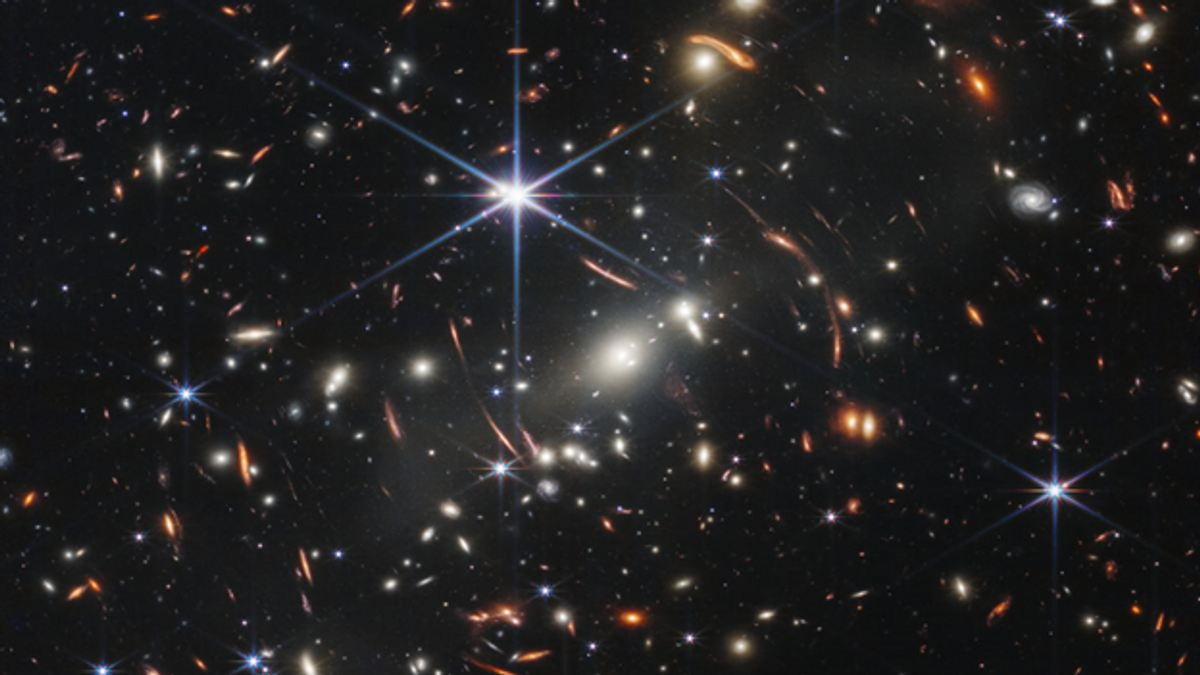
Gravitational Equilibrium: Solar System and Beyond
The Universe, the Cosmos in its entirety of the unlimited extent, appears to be a symbol of fine gravitational equilibrium. The mesmerising creation whether viewed from earth or beyond, with or without advanced technological aid, has always posed numerous many questions than hinting any answer with sound scientific explanations. BUT…wait for a while. Is it really under a fine gravitational equilibrium? We have been told by some that the Earth is drifting away from Sun and the Moon from the Earth albeit by a negligible 1½ inch per year or so. Wow!!! The vast skills of those scientists need to be commended who claim the 12742 Km diameter Earth and 3475 Km Moon be drifting away by 5 cm/yr, 0.1 mm/day. What precise measurements must these be. Commendable isn’t it? They also claim that such 0.1mm adrift new orbits are autocorrected with whatever little changes in the orbital periods of these celestial bodies. The final outcome they claim, is the fine natural orbital equilibrium maintained between cosmic bodies.
Cosmologists or Astronomists believe our Sun may not be static, maybe revolving around the Stellar system which itself is revolving around the centre of our Galaxy. What about our Galaxy? Is it too revolving around some other mass in our Milky way? How about the invisible/unknown masses in the Cosmos? Are those masses of the another Solar system, Stars, Galaxies and Milkyways too revolving around another one, the galaxy of galaxies…the mother of all galaxies? And how about that mother of all galaxies? Is that too revolving around yet another giant mass? And how about that giant mass and another super giant mass and beyond? Where will all these end up? Are they static congregations of masses or dynamic ones? Are they following a common law of motion or are there are numerous laws beyond the comprehension of the scientists? There seem to be lot many questions but far fewer answers.
It has to be distinguished that Newton’s law of gravitational forces are between two masses, Kepler’s law of interplanetary forces also incorporates the group of masses with gaps ranging from fractions of millions to billions/trillions of kilometres (i.e. planets with their moons at varying gaps and interplanetary gaps). Similarly, inter-Star gravities incorporate gaps between planets, Galaxies have masses having huge internal gaps and so on.
What is the Gravito-Spatial outlook or configuration of the celestial bodies, with the whole lot of stars, the stellar systems, the galaxies and beyond; included both within our imaginations and beyond? Gravitational laws on a planet, interplanetary gravitations have somewhat been defined by Newton’s laws, Modified Newton’s Dynamics (MOND) and Keplers’ laws. Keplers’ law and Einstein’s Relativity may also partially explain the gravitational forces between the Stars, the Stellar Systems but what about the gravitational forces in a galaxy and inter-Galaxies? It is believed that Gravitational forces between unduly long distances of many light years could be somewhat different. There are some postulations of Galaxies moving around independent focii (like dumbbells) but whether those focii are static or dynamic, have differing opinions. There are postulations of Dynamic Medium of Response (DMR) but without credible proof. Inter-galaxial motions are considered both gravitational and non-gravitational. Lot many formulae and equations have been postulated but lack consistency and consensus among the postulators.
While considering the movement of the galaxies, questions also arise on the extent of the space. And what is beyond those limits? Well a white-skinned privileged personality even if disabled, confined to a chair, could hypothesize something and his followers would take it forward with postulations/speculations…making numerous many shows on TV channels…BUT…what is the actuals, the reality? None know and science doesn’t accept speculations or even unfounded postulations. Are all galaxies, super-galaxies integrated in one or there are several bodies of 1n galaxies interspersed with blank spaces…with the billions of billions of billions in numbers…the real infinite? Well! A very clear answer could be “Possibly none know of it, one may imagine anything though”.
The above are the queries that every student of science have in their minds that are yet to be answered through evidence. However, if we apply the rule of Gravity based motion in the limitless Cosmos, there has to be a bigger source of Gravity which makes all these finely balanced revolutions on own axes as well as in the Orbits of its immediate masters… like the Earth for Moon and The Sun for the Earth and so on. Logic says it must be the likes of it…BUT…is it really like that?
Space science has enhanced our understanding of various combinations of Gravitational forces through various phenomena. Artificial satellites are fine examples of gravitational orbits. The orbital velocity of any or all satellites have to be finely/perfectly balanced for a given distance from the centre of dominant mass of attractions lest it will either falling into it or drift away. There are some exceptions too…that are the Langrage points between the celestial bodies where resultant of all forces (gravitational force = G; and centrifugal force F=mv2/r= mω2r) are net zero…the centre point of a tug of war in equilibrium…but here too, one must remember that the gravitational sum zero at any given point in space is seldom static/constant. These orbital or zero-sum G concerns are being elaborated here only for one reason, for any mass to remain in gravitationally equilibrium for millions and billions of years, it must tread a path that is defined as stable, in the cosmic equation…the Sun along with its planets (and their moons) …the Stellar system along with its many Suns…the galaxies with many of its Stellar Systems and so on…BUT…the masses of these bodies may be depleting and so do their gravitational Forces.
Orbital equilibrium of a moon around a planet will be different under two circumstances of the planet being static or moving around the Sun. Should the Universe/Cosmos be expanding, whatever little difference in the gravitational force(s) may ensue, could be enough to break the orbital equilibrium. In the same way, orbital equilibrium of planets along with their moons, of the many Suns along with their planets, of many galaxies along with their Stellar systems…could all be jeopardised depending on whether their own states are static or dynamic in the Cosmic system. It will also depend upon whether the Cosmos is expanding or constricting. Does rare planetary alignment cause their orbits to drift? We don’t know. If they are expanding, what is the force pushing them outward? Is it their initial momentum of ‘Big Bang’ or something else? If the Cosmos is constricting, what is pulling them in? Are there Black Holes? What is the gravitational influence of nearly/passing Cosmic bodies? The 2-yearly proximity of the passing Mars with the Earth (and our Moon) apparently doesn’t disturb their fine equilibrium. So what is the truth of the resultant gravitational forces…of Moon vs planets…of planets vs the Sun…of the Sun vs Stellar system and so on? The recent photographs of deep space by James telescope is even more intriguing, full of scientific secrets and poetic imaginations.
If the Stars/Stellar bodies/galaxies were in cosmic equilibrium, catastrophes will be rare if at all. Let us consider reports/observations of Cosmic scientists, that inter-stellar collisions or their swallowing by black holes do often take place even if millions or billions of light years away. This means the celestial objects may be moving at different relative velocities, may be in the same direction or on a collision course. If we consider their other assumption that the Universe is expanding, this will break the gravitational equilibrium and the Stellar systems or the Galaxies will start falling apart…one level of equilibrium breaking the other. On the other hand, if we assume the dark matter/black hole is swallowing the neighbouring stars, this is bound to set a chain reaction that could eventually turn the entire galaxy into a giant black hole that may burst into many new stars, stellar systems or even galaxies.
On this note, let us return to the deliberations on the continuous movements of the planets around the Sun, the Sun around the nearby Stars/Stellar bodies…the Stellar bodies around the galaxies…and the galaxies around the other unseen forces. The answer is not known; one may only speculate or apply logic. Speculation has no place in science. The logic of gravity is not uniform in its application esp beyond the Solar system as elaborated. Are there Lagrange type of spaces in the Stellar systems and galaxies? We don’t know. What if a Solar/Stellar system gets into those inter-stellar/galaxial Lagrange? There are several unsubstantiated postulations and hypotheses.
The Earth’s gravity gradually (nearly) fades away in a few millions of kilometres and the Sun’s gravity in about 10 billion. What really holds the stellar and galaxies at great distances of hundreds, thousands or million-billion light years apart, none know for sure. There is a tendency for the world to accept speculations/postulations by privileged personalities till the time proven wrong. This author having numerous many questions but no authentic answers, belongs to none of those categories. May be the science of Cosmology could postulate/Hypothesise/prove some of those questions in future.




